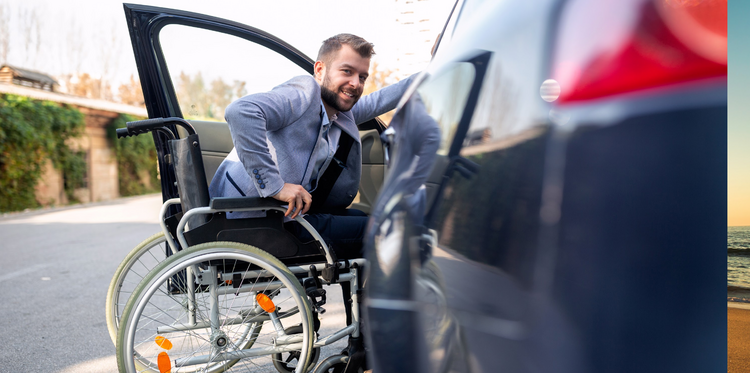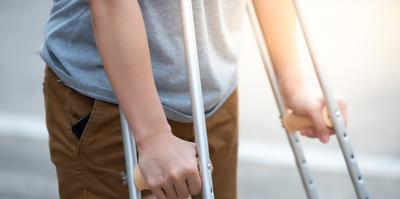
The Impact of Handicap Placard Abuse and How to Report it Ohio
Introduction
Handicap permits are essential for individuals with disabilities as they provide convenient access to parking spaces and other accommodations. Unfortunately, there are instances of abuse where people misuse these permits for their personal gain, leading to significant negative impacts on those who genuinely need them. In this article, we will explore the impact of handicap placard abuse in Ohio and provide guidance on how to report such instances. By raising awareness and taking action against abuse, we can ensure that these resources are available to those who truly require them.
The Impact of Handicap Placard Abuse in Ohio
Handicap permit abuse in Ohio has far-reaching consequences that affect both individuals with disabilities and the broader community. Let's delve into some of the key impacts:
1. Limited Accessibility for Individuals with Disabilities
Handicap parking spaces are strategically placed near entrances and exits of public facilities, making them easily accessible for individuals with disabilities. However, when these spaces are occupied by abusers without disabilities, it creates a severe barrier for those who genuinely need them. Limited accessibility can restrict their ability to engage in essential activities, such as shopping, attending medical appointments, or participating in community events.
2. Increased Frustration and Inconvenience
Imagine being a person with a disability who relies on a disability permit to find suitable parking spaces. Discovering that the designated spots are occupied by able-bodied individuals misusing these privileges can be extremely frustrating and demoralizing. It adds an unnecessary layer of inconvenience to their daily lives, exacerbating the challenges they already face.
3. Safety Concerns
Designated parking spaces are often wider to accommodate wheelchair ramps and other assistive devices. When these spaces are illegally occupied, it compromises the safety of individuals with disabilities. They may have to navigate their way through narrow spaces, risking accidents or injuries. Moreover, misused permits can lead to overcrowding and confusion in parking lots, making it difficult for emergency services to access the area efficiently.
4. Loss of Trust in the System
Handicap placards are issued to individuals who have legitimate disabilities and require accommodations. When these placards are abused, it undermines the integrity of the system. It fosters a sense of mistrust among both individuals with disabilities and the general public, who may question the authenticity of every handicap placard they encounter. Restoring trust is crucial to ensure the effective functioning of the program.
How to Report Handicap Placard Abuse in Ohio
Reporting Ohio handicap placard abuse is essential to combat the problem effectively. By reporting instances of misuse, concerned citizens can contribute to maintaining the integrity of the system and ensuring that resources are available to those in genuine need. Here's how you can report handicap placard abuse in Ohio:
1. Collect Evidence
Before reporting disability placard abuse, gather evidence to support your claim. Take clear photographs or videos of the vehicle displaying the placard and its surroundings. Document the date, time, and location as well. This evidence will strengthen your report and make it easier for authorities to take appropriate action.
2. Contact Local Law Enforcement
Start by contacting your local law enforcement agency. Provide them with the collected evidence and explain the situation. They will guide you on the next steps and initiate an investigation if necessary. It is crucial to report abuse promptly to ensure timely intervention.
3. Notify the Department of Public Safety
In Ohio, you can also report placard abuse to the Ohio Department of Public Safety. They have a dedicated Fraud and Compliance Unit that investigates allegations of abuse. Contact their office or submit a report through their official website, providing all relevant details and evidence.
4. Engage Community Organizations
Raise awareness about placard abuse within your community. Collaborate with local disability advocacy groups, neighborhood associations, or other relevant organizations. By working together, you can educate others about the issue, encourage reporting, and foster a sense of responsibility among community members.
5. Utilize Online Reporting Platforms
In addition to traditional reporting methods, explore online reporting platforms that may be available in your area. Many states provide online reporting systems specifically designed to handle placard abuse complaints. These platforms streamline the reporting process and ensure that your complaint reaches the appropriate authorities promptly.
6. Follow Up
Once you have reported the abuse, follow up with the relevant authorities to ensure that appropriate action has been taken. Be persistent in seeking updates on the progress of the investigation and the outcome of your report. Your involvement can make a difference in deterring future abuse and protecting the rights of individuals with disabilities.
FAQ
1. How do I know if someone is abusing a disability pass?
Spotting an abuse can be challenging, but some common signs include:
- An individual who appears physically fit but uses a disability parking space.
- A permit that is not displayed properly or is expired.
- A vehicle consistently parked in a disability spot without a person with a disability exiting or entering.
If you suspect abuse, it is crucial to gather evidence and report your concerns to the appropriate authorities.
2. What are the penalties for disability pass abuse in Ohio?
In Ohio, the penalties for disability pass abuse can vary depending on the severity of the offense. They may include fines, suspension or revocation, and potential criminal charges. The exact penalties are determined by the court system and may be subject to change. By reporting abuse, you contribute to ensuring that appropriate penalties are enforced.
3. Can I report disability pass abuse anonymously?
Yes, in most cases, you can report an abuse anonymously. When contacting law enforcement or using online reporting platforms, you can request anonymity. However, providing your contact information can be helpful for follow-up or clarification if required.
4. What happens after I report disability pass abuse?
After you report the abuse, the appropriate authorities will review the evidence and investigate the matter. If they find evidence of abuse, they will take appropriate action, such as issuing fines, revoking permits, or pursuing criminal charges if necessary. The exact course of action will depend on the severity of the offense and the discretion of the authorities involved.
5. How long does it take to resolve a disability pass abuse report?
The time it takes to resolve a disability pass abuse report can vary. It depends on various factors, including the workload of the investigating agency, the complexity of the case, and the availability of evidence. It is essential to be patient during the process and follow up with the authorities if necessary.
6. What can I do to prevent disability pass abuse in my community?
To prevent this abuse in your community, consider taking the following steps:
- Raise awareness about the issue through community events, workshops, or informational campaigns.
- Encourage responsible reporting of suspected abuse.
- Collaborate with local law enforcement and community organizations to address the problem collectively.
- Advocate for stricter penalties for offenders to deter potential abusers.
By actively engaging with your community, you can play a vital role in combating disability pass abuse.
Conclusion
Handicap placard abuse in Ohio has significant consequences for individuals with disabilities and the community as a whole. By understanding the impact of abuse and knowinghow to report it, we can take proactive steps to address the issue. Remember, it is essential to collect evidence, report abuse to local law enforcement or the Department of Public Safety, engage community organizations, and utilize online reporting platforms. By working together, we can protect the rights of individuals with disabilities and ensure that handicap placards are used appropriately. Let's strive for a more inclusive and accessible society.
.png)






